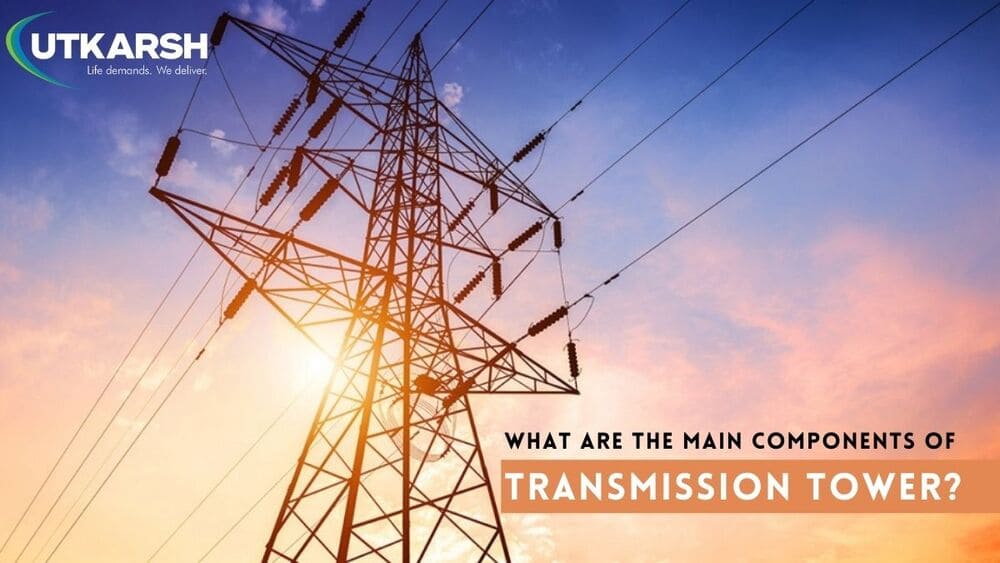What Are The Main Components Of Transmission Tower?

The transmission tower acts as an expressway for transmitting high-voltage electricity. The transmission tower, in addition to the supply of power to cities, connects power plants to the substation.
What is a Transmission Tower?
To understand the components of the transmission tower, it is important to understand what defines a transmission tower.
A transmission tower is a tall structure that is made from steel to support an overhead power line. The transmission tower in electric grids helps in carrying voltage transmission lines, which carry bulk electricity from generating stations to substations. The transmission towers are installed at a sufficient height above the ground to carry high-voltage power.
Components of Transmission Tower
The Cage Of The Tower
The area between the body and the peak is the cage of the transmission tower. The vertical section of the tower, which has a cross-sectional design, is the cage. The design can take the shape of a square or a triangle according to the height of the tower.
Peak Of The Tower
The portion at the top of the tower, which is above the top cross arm is called the peak of the tower. For the supply of electricity from tower to homes, an earth shield wire is connected to the top of the peak of the tower.
Cross Arm Of The Tower
The side arms of the tower on both sides hold the transmission conductor is called the cross arm of the tower. The dimension of the cross arm depends on the transmission voltage, angle, stress distribution, and configuration of the wires. The cross arm of the tower helps in connecting wires from one tower to another.
Transmission Tower Body
The distance from the lowest cross arm of the tower to the ground is called the transmission tower body. It is necessary for towers, as it provides the height of the tower required for ground clearance.
You May Like: A Brief Introduction to Transmission Towers
Other Components of Tower Design
Circuit
Depending on the design of the tower, it has one or more circuits. For voltages up to 200KV, it is generally a single conductor that contains 3 circuits, and when the voltage goes above 200 kV, it has a bundled conductor, which means it has more than 6 circuits, which enhances the capability of the power lines and reduces the loss in power during transmission.
Ground Wires
The ground wires are strung along the top of the tower to protect it from lightning strikes. The high-voltage system has two ground wires for reliable communications.
Things To Consider In Tower Design
- There should be a good foundation as the foundation is the basic structural support for the tower.
- The minimum ground clearance is the lowest wire conductor above the ground level.
- The clearance is required for consideration of the dynamic behavior of the conductor and the lightning protection of the wire lines.
Conclusion
Utkarsh India, one of the leading transmission tower manufacturers in India, produces Powergrid-approved Transmission Line Towers ranging from 66 kV to 765 kV. The company manufactures single, double, and multi-circuit towers, including AC line or DVDV line configurations for angular, tubular, or hybrid transmission. Using high-quality materials such as structural steel in lattice form, steel tubular sections, monopoles, and concrete, Utkarsh India ensures strength, durability, and performance in every structure.